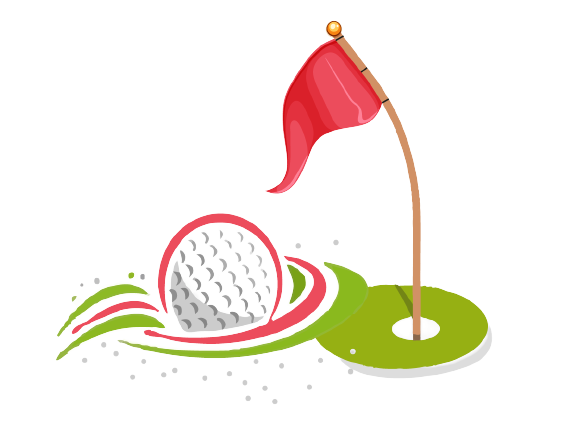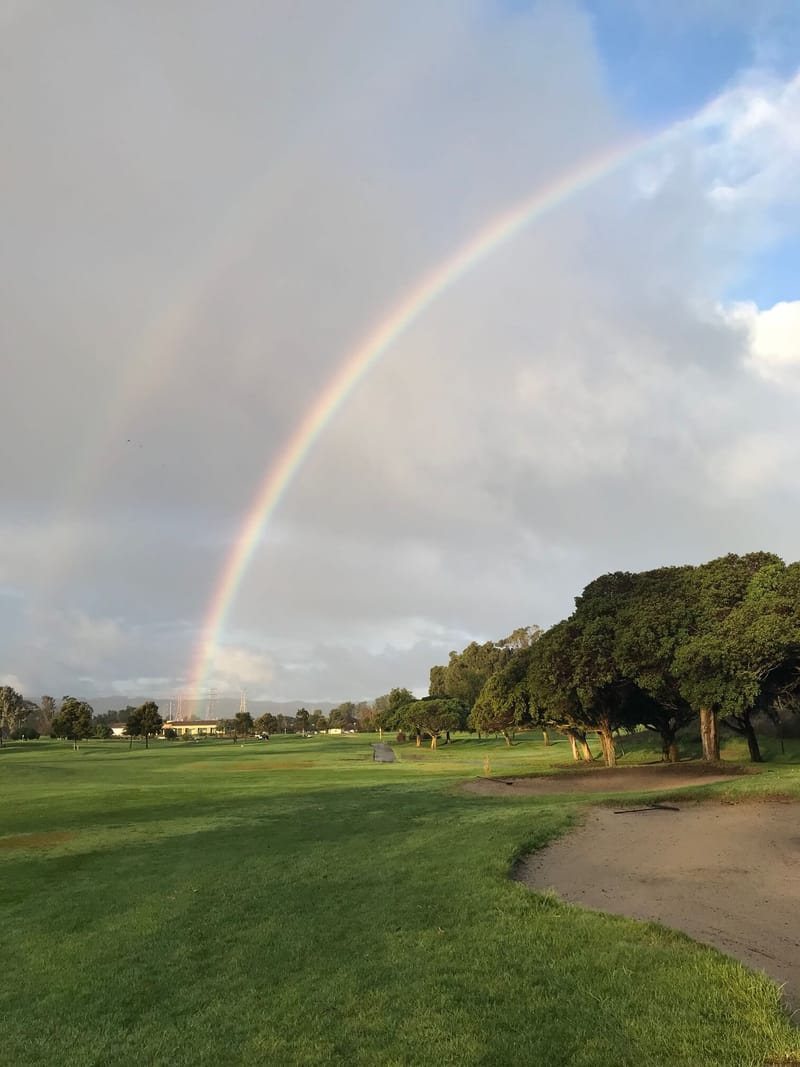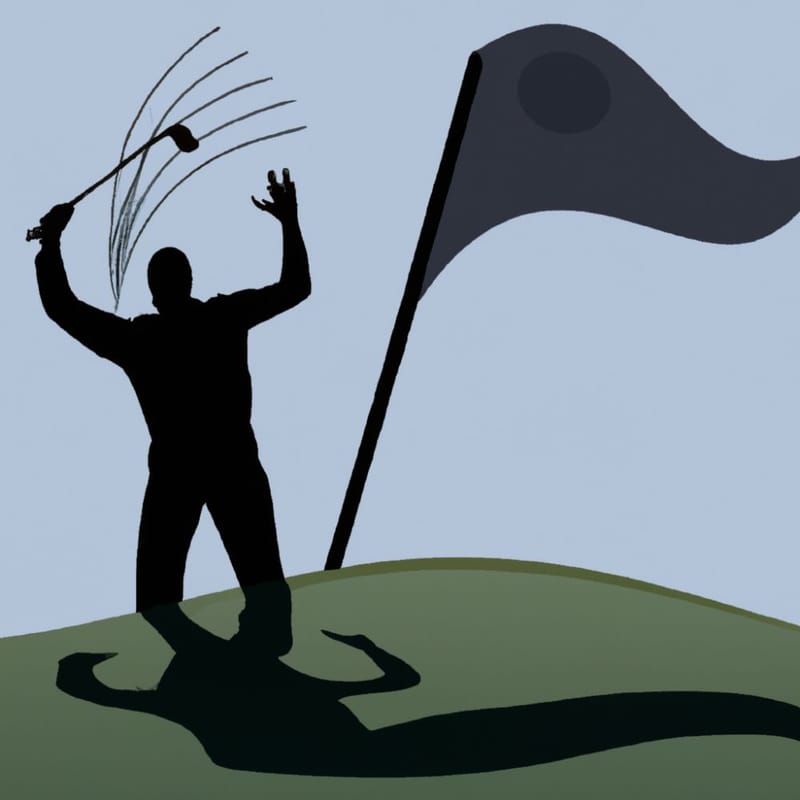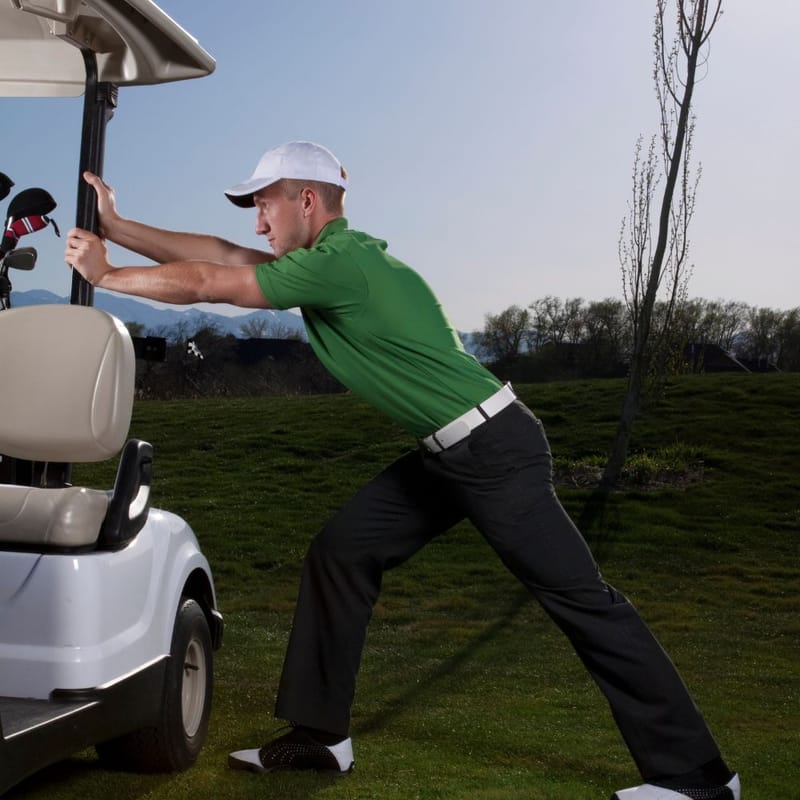Content Summary
Lob Wedge vs Sand Wedge: Get To Know All the Differences
Some of the questions I hear all the time out on the golf course are; What is the difference between a lob wedge and a sand wedge? Don't they both do the same job?
Wedge golf is a game that requires a great deal of skill, precision, and patience. One of the most important tools in a golfer's arsenal is the wedge.
Wedges are essential for getting out of tricky situations on the course, such as bunkers or tall grass, and for making accurate shots onto the green. Proper use of wedges can make all the difference between winning and losing.
Today we're going to be discussing two specific types of golf wedges - lob wedge and sand wedge. These two clubs may look similar at first glance, but they have distinct differences in their design and functionality that make them unique when it comes to their intended use on the course.
It's important to understand how each wedge works so you can choose the right type for your game. Whether you're a beginner or an experienced golfer looking to improve your skills, understanding these differences can help you hit more accurate shots to get you closer to your goal of being a better golfer.
Some History on the Introduction of the Lob Wedge to Golf
The lob wedge (LW) is a fairly new addition to the wedge family, in terms of golf, when compared to the sand wedge.
Most golf history buffs concur that it emerged in the mainstream during the mid-1980s, as a response to the growing complexity of putting green designs.
Although the origin of the lob wedge is subject to debate among golf equipment enthusiasts, the name of Dave Pelz, a well known coach, is often mentioned more frequently than others (this is who I always understood introduced the LW).
Pelz, disheartened by his failure to qualify for the PGA Tour, chose to utilize his background at NASA and understanding of physics to improve his golf skills.
His short game was a particular area of weakness, so in 1970, he initiated an investigation into the dynamics of the putter head's impact on the ball and the mechanics of both player and club during the putter swing.
He then went on to introduce many new concepts regarding the golf short game with the lob wedge flop shot among them.
Lob wedges typically have a loft angle ranging from 58 to 64 degrees, and their design often includes a slimmer leading edge, a marginally shorter shaft, and potentially less bounce than a conventional sand wedge.
Similar to the sand wedge, the lob wedge is not typically included in a set of irons and needs to be acquired separately.
Definition and Purpose of a Lob Wedge
A lob wedge is a type of golf club that is used for shots that require high trajectory and short distances. It has the highest loft angle among all the wedges, usually ranging from 58 to 64 degrees.
The purpose of a lob wedge is to get the ball up in the air quickly and have it land softly on the green, making it easier to control and stop. Lob wedges are also useful when you need to clear an obstacle like a bunker or rough while still having enough spin to control where the ball lands.
These shots require accuracy and precision, which makes a lob wedge perfect for such situations. By hitting the ball higher into the air with more backspin, you can control how far it rolls once it hits the green.
Loft Angle and Bounce Characteristics
The main characteristic of a lob wedge is its high loft angle, which provides more vertical lift than any other club in your bag. This makes it easier for golfers to hit high-arcing shots with plenty of spin.
Additionally, lob wedges typically have less bounce compared to other types of wedges because they are designed to be used on softer turf conditions like fairways or greens. Bounce refers to how much the sole (bottom) of the club sits off of flat ground when you address your shot.
Less bounce means there is less room underneath your club before it hits the ground. This can be helpful when trying to hit shots off tight lies or hardpan surfaces since there is less chance for your clubhead to bounce off or dig into the ground.
Advantages and Disadvantages of Using a Lob Wedge
One advantage of using a lob wedge is its ability to create high trajectory shots that stop quickly on landing. This makes them essential for getting out of tricky situations where accuracy and precision are required.
Additionally, lob wedges can be helpful when playing on courses with soft greens or bunkers since their high loft angle will prevent the ball from rolling too far. However, one disadvantage of using a lob wedge is that it requires a lot of skill and practice to use effectively.
It takes time to learn how to hit full shots with a lob wedge without sacrificing accuracy and distance control. Additionally, because they have less bounce than other types of wedges, they can be more difficult to use if you're not familiar with the technique required for hitting off tight lies.
Situations Where a Lob Wedge is Most Useful
Lob wedges are most useful when you need height and spin on your shot while still maintaining control over the ball's landing spot.
For example, if you've missed the green and need to get up-and-down in two strokes, a lob wedge can help you clear any obstacles in your way while stopping the ball quickly on landing.
Another situation where a lob wedge may be useful is when playing on short par-3s where accuracy is key. By hitting high-arcing shots with plenty of backspin, golfers can land their balls softly on small greens that are protected by hazards like bunkers or water.
Overall, there are many different situations where having a lob wedge in your bag can be advantageous. If you're looking for a club that will help improve your short game skills while providing plenty of versatility, then investing in a high-quality lob wedge might just be the ticket.
One of the problems I see with most golfers is they don't take the time to practice lob wedge shots and try to create them once they are out on the golf course in tricky situations.
Personally, I use my sand wedge as a lob wedge by opening up the face a bit. It is something I do practice so when I need it I am prepared.
Sand Wedge: The Ultimate Greenside Weapon
Sand wedges are an important club in any golfer's bag. As the name suggests, they are primarily used to get out of sand bunkers, but they can also be used for a variety of other shots around the green.
Sand wedges have a loft angle between 54 and 58 degrees and are designed with a wide sole and high bounce angle to help you get through soft sand and heavy rough. The purpose of a sand wedge is to make it easier for you to get out of sand traps and other difficult lies around the green.
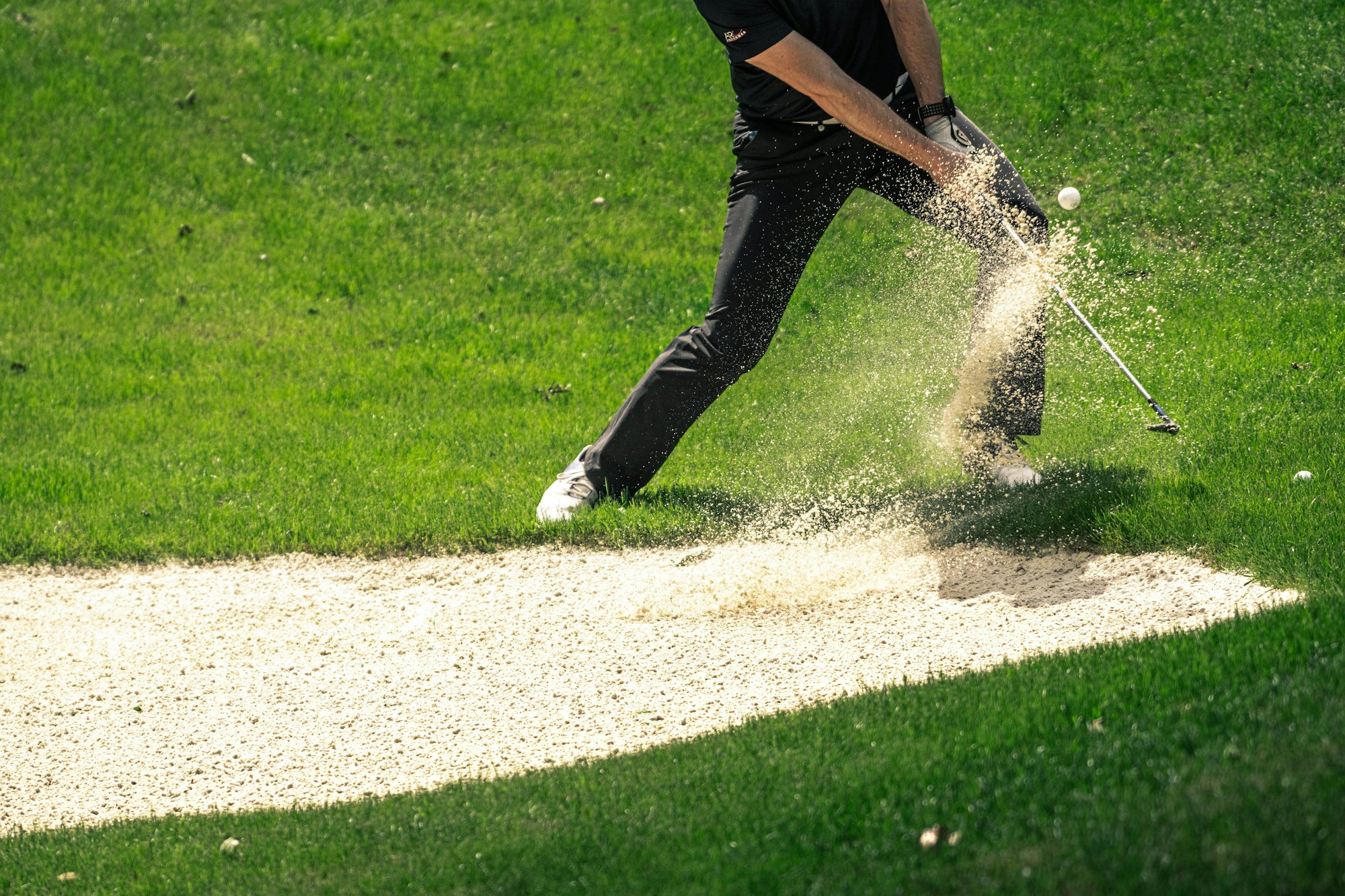
The high loft angle allows you to hit the ball high into the air, while the extra weight in the clubhead helps you generate more spin on your shots. This combination of loft and spin makes it easier for your ball to stop quickly on the green, giving you more control over your approach shots.
One advantage of using a sand wedge is that it allows you to hit high, soft shots that land softly on the green. This makes them ideal for chipping onto firm greens or getting out of deep bunkers with steep faces.
One disadvantage though is that they can be harder to control on longer approach shots due to their higher trajectory. Situations where a sand wedge is most useful include when playing from greenside bunkers or deep rough around the green with an obstructing obstacle like tall grass between your ball and target.
They can also be used when chipping close onto the green. You can open up the face allowing for more lift with less roll which makes it ideal in tight spaces like near pins or when your golf ball is tucked behind trees where there isn't much roll once it lands on the putting surface.
One of my favorite shots is to hit a high sand wedge over tress onto the green. There is no better feeling when you pull this shot off and have your playing partners oohing and aweing.
The sand wedge is a crucial club for any golfer who wants to improve their short game and lower their scores.
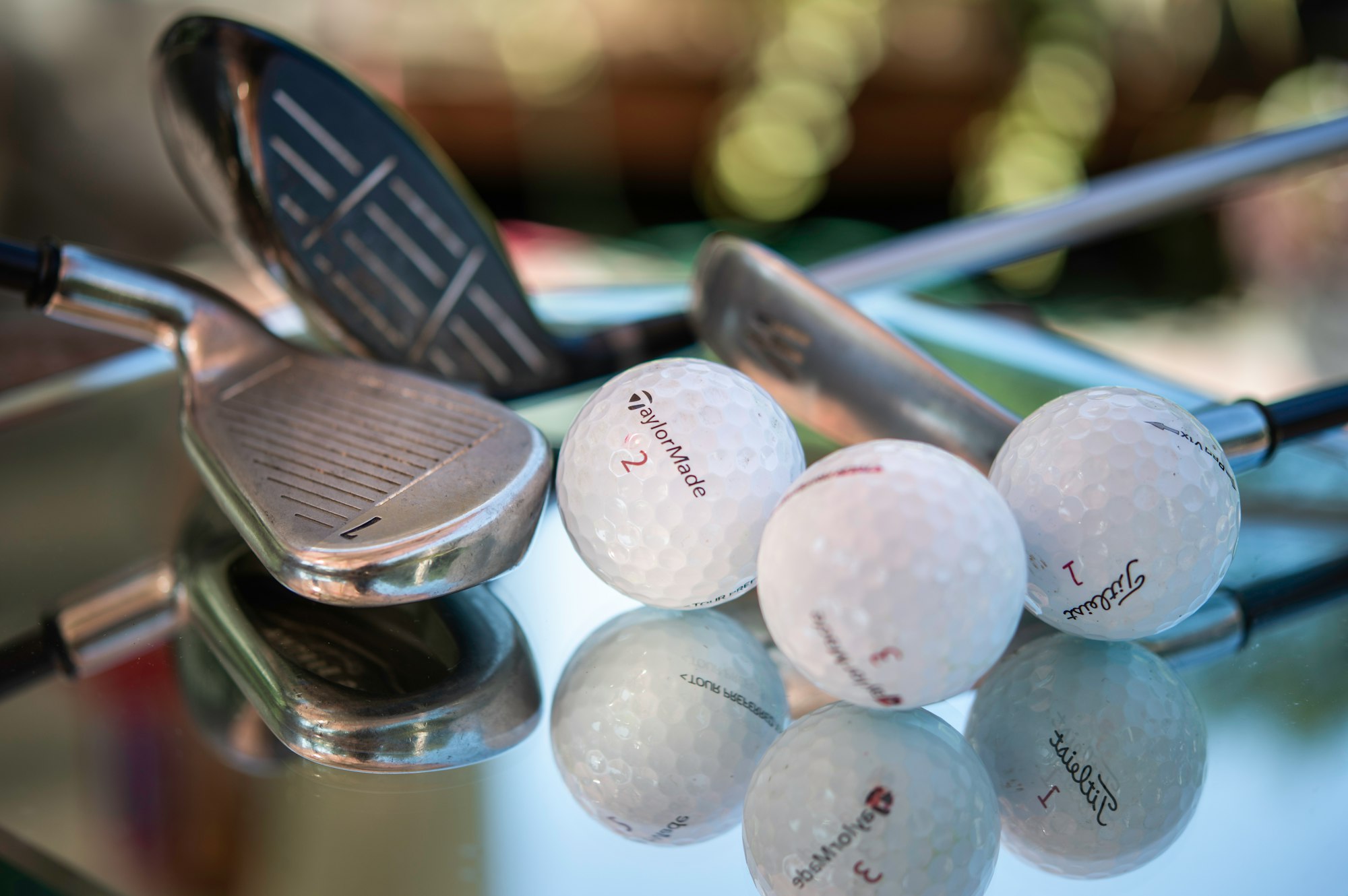
Differences between Lob Wedge vs Sand Wedge
Comparison of Loft Angles
Loft angle plays a significant role in determining shot outcomes. A lob wedge typically has a loft angle of 58 to 64 degrees, while a sand wedge has a loft angle between 54 to 58 degrees (as with anything in golf, depending on who you ask, there is always a difference of opinion in some areas).
This difference in loft angle results in the lob wedge having more height and less distance than the sand wedge. The higher trajectory of the lob wedge makes it ideal for shots that need to stop quickly on the green or when trying to get over an obstacle like a bunker or high lip.
Comparison of Bounce and Weight Distribution
Bounce refers to the angle between the leading edge and trailing edge of the clubface relative to the ground when addressing a ball.
Lob wedges tend to have less bounce than sand wedges, which can be good or bad depending on various factors like turf conditions.
The weight distribution is also different between these two types of wedges, with most lob wedges having their weight concentrated towards their clubface's bottom, while most sand wedges have their weight evenly distributed throughout their entire head.
Comparison of Spin Control
Both types of clubs offer spin control but achieve it differently because they have different grooves design. A lob wedge's design allows it to create more spin because its grooves are narrower and deeper, allowing them to grab onto the ball better.
In contrast, a sand wedge has wider and shallower grooves that help disperse debris like grass or dirt from between its grooves easily.
The difference in loft angles affects how high and far each type goes; differences in bounce affect how well each type glides across different turf types; and differences in groove design affect how much spin each type produces when hitting greenside shots.
Understanding these differences is crucial for choosing which club to use in specific situations.
Which One to Use When?
When it comes to choosing between a lob wedge and a sand wedge, the decision can be tricky. While both serve similar purposes, there are some key factors to consider when deciding which one is appropriate for the situation at hand. One factor to consider is the lie of your ball.
If your ball is sitting on a tight lie or fairway, a sand wedge might not be necessary as the bounce on the club could cause you to hit thin shots. A lob wedge would be more appropriate in this situation as its lower bounce angle would allow you to get under the ball more easily.
Another factor is distance. If you need to hit a shot that requires more carry and less roll, such as hitting over water or bunkers onto an elevated green, then a lob wedge with its higher loft angle would be ideal.
However, if you need to hit a short chip or pitch shot with minimal carry distance and more roll, then a sand wedge with its lower loft angle would be more appropriate. Green speed is also an important consideration when deciding between these two clubs.
If you are playing on fast greens where spin control is crucial in order to hold the ball on the green after landing it, then using a lob wedge with its higher spin rate capabilities would make sense. On slower greens where roll out after landing is desirable, using a sand wedge with less backspin and more forward spin will help produce that result.
Examples of Situations Where Each Type Would Be Most Effective
Let's take an in-depth look at some specific situations where either a lob wedge or sand wedge would be most effective: Pitching from rough: A lob wedge would work well in this situation because its high loft angle (typically 58-64 degrees) helps get under the ball even when it's buried in thick grass.
The loft angle will also create backspin which can help stop the ball quickly on the green. Greenside bunker shots: A sand wedge is specifically designed to make it easier to get out of bunkers, so this is the perfect club for getting your ball out of the sand.
The bounce angle on a sand wedge is typically between 10-16 degrees, which allows you to slide the club under the ball and lift it out of the sand. Approach shots from 100 yards: In this situation, either a lob or a sand wedge could be used depending on what type of shot you want to hit.
If you need more carry and less roll once you land on the green, then a lob wedge would be more appropriate. If you want more roll out after landing in order to get closer to the hole, then go with a sand wedge instead.
| Type of Wedge | Wedge Degree | Club Distance (Avg.) |
|---|---|---|
| Standard Pitching Wedge | 45° | 100-135 yards |
| Gap Wedge | 52° | 90-120 yards |
| Sand Wedge | 56° | 80-100 yards |
| Lob Wedge | 60° | 60-90 yards |
Conclusion
After comparing the pros and cons of both a lob wedge and sand wedge, it's clear that both types of golf clubs have their advantages in certain situations. The lob wedge is effective for high, short shots that require a lot of height but not much distance, while the sand wedge is best used for bunker shots and getting out of trouble.
When deciding which type of wedge to use, consider the factors discussed in this article such as lie, distance, green speed, and spin control. It's important to choose the right club for each shot to get the best possible outcome.
While some golfers may prefer one type over the other based on personal preference or experience, it ultimately comes down to what will work best for each individual situation. Golfers should experiment with both types and practice their technique with each club to determine which one works best for their game.
Remember that regardless of whether you choose a lob or sand wedge, mastering your short game takes practice. With enough time and effort put into refining your skills with these clubs, you'll be able to make those difficult shots look easy.
Thank you for visiting, and we hope to see you back soon!
